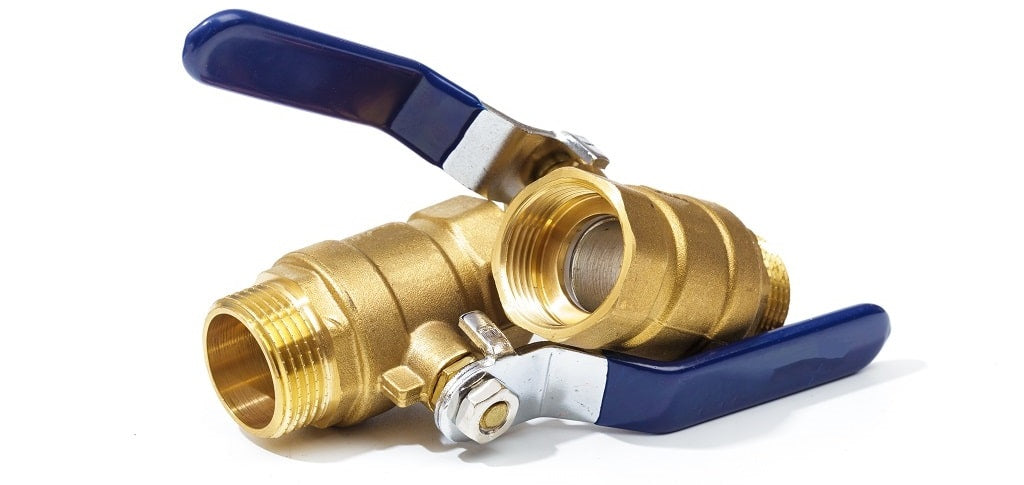Cv Valve Flow Coefficient Calculator for Water, Viscous Liquid, and Gas
When it comes to figuring out how to calculate flow capacity through a valve, this Cv calculator can help. To represent the flow capacity of a valve, the valve flow coefficient (Cv) calculator takes into consideration information such as the type of fluid, the fluid temperature, outlet pressure, and inlet pressure (both are absolute pressure).
Valve Cv Calculator for Water
Valve Cv Calculator for Viscous Liquid
Valve Cv Calculator for Gas
Shop today at Blackhawk Supply and get best deals!
BROWSE PLUMBING SUPPLIESWhat Is a Valve Flow?
Valve flow refers to the volume of fluid that can pass across the valve, signaling the valve's capacity. With a valve flow Cv calculator, we use the valve flow coefficient calculation to determine the capacity a given valve has for liquid or gas to flow through. The valve Cv calculator helps make finding the capacity of your valve easier.
Online Cv Flow Calculator
You're not on your own when it comes to calculations. To help make calculating your valve flow for liquid or gas easier, use our Cv calculator to make the math simple. There are different formulas for gas flow rate and fluid flow rate calculations, so keep reading to find out more about the calculation process.
How to Calculate Kv Using the Cv Calculation Formula

To compare the capacities of different valves, we use flow coefficients to help determine different sizes, types, and manufacturers of control valves. Cv flow coefficient represents the flow capacity a valve will pass in imperial units - GPM (US gallons per minute) for a 1 lb/in2 (psi) pressure drop. The flow factor is used when capacity is in SI units and is represented as “Kv”.
Kv = 0.857 * Cv
Cv = 1.165 * Kv
To find the right control valve for you and calculate flow through a valve, we use the flow coefficient, Cv, to estimate fluids and gas.
Your Cv calculator formula depends on what is passing through the valve - whether it be liquid or gas. With this in mind, below, you will find how to calculate your Cv value based on the substance you're working with. Check it out!
Cv Calculator Formula for Water
To calculate the flow rate through a valve with water, we recommend the following formula:
Cv = Q / (SQRT (P1 - P2))
In this case, each represents the following:
-
Cv: valve flow coefficient
-
Q: flow rate in Gallons Per Minute
-
P1: upstream pressure
-
P2: downstream pressure
Cv Value Formula for Liquid
When it comes to liquid, there are a few more equations to consider.
Turbulent Flow
FpCv = (Q/(N1 * Fr)) * SQRT(SG/(P1-P2))
Laminar Flow
FpCv = (1/Fs)((Q*U)/(N10*(P1-P2))^⅔
Then, CvRatio=(Turbulent Flow Equation)/(Laminar Flow Equation)
The equation you use depends on the Cv ratio. If your Cv Ratio is less than 0.46, use the laminar flow equation. If not, use the turbulent flow equation.
Below is the key to the formula:
-
Cv: valve sizing coefficient
-
Q: flow rate in Gallons per Minute
-
U: viscosity in centipoise
-
SG: density liquid/density water when 60F
-
P1: upstream pressure in PSI
-
P2: downstream pressure in PSI
-
N1: 1.0, units constant
-
N10: 52.3, units constant
-
Fp: 1.0, the correction factor for piping around the valve
-
Fr: 1.0, Reynolds factor
-
Fs: 1.05, valve factor for plug valve
Cv Formula for Gas
Now, it's time for the Cv calculation formula for gas. Here's how to calculate:
Cv = Q/(16.05 * SWRT((P1^2 - P2^2)/(SG * (T+460))))
Formula key:
-
Cv: valve sizing coefficient
-
Q: gas flow rate in SCFM
-
P1: upstream pressure in PSI
-
P2: downstream pressure in PSI
-
SG: Specific Gravity, which is density gas/density air at 14.696 psi and 60F
-
T: fluid temperature in degrees Fahrenheit
Types of Valves

Once you've used the valve Cv calculator and have your calculated value, it's time to select the right control valve. There is a lot to choose from, so let's break down a few of the top-performing types of valves.
Ball Valves
Ball valves offer the broadest spectrum of use for isolation applicators and come in many different orifice diameters, pipe connection sizes, and material options. These valves offer straight-through flow and a low-pressure drop, and are quick-acting and easily actuated.
Globe Valves
With a globular body, globe valves cause increased resistance to flow, and a significant pressure drop as this valve's flow path offers a changing course. These are best for throttling flow, but to avoid excess noise, they are not great for extremely close throttling. Globe valves are also designed in a way that allows them to open and close quickly.
Butterfly Valves
Butterfly valves are used for flow isolation as the disc provides low operating torque and bubble tightness. These valves have good regulating characteristics, are compact, and are quick-acting for low-pressure isolation.
Ready to get going with a new valve? Blackhawk Supply has the expertise to help you with all your valve needs, from utilizing the Cv calculator to selecting the right products. Contact us at (847) 773-0645, and our specialists will answer all your questions about Cv calculations.
Featured Products



Why Choose Blackhawk Supply?
We combine decades of industry expertise with outstanding customer service. Our knowledgeable team is here to help you find the right supplies for your next project. Whether you're managing a large commercial installation or a minor repair, we have the parts and support you need. Here are the top reasons to partner with us:
Free Shipping On
Orders over $999*
Excellent Customer
Satisfaction
Secure Online
Payment
5-star Customer
Service
Quantity
Discounts
Partner With Us
Join our extensive network of partners and discover how we can help improve your business operations.
Apply →







